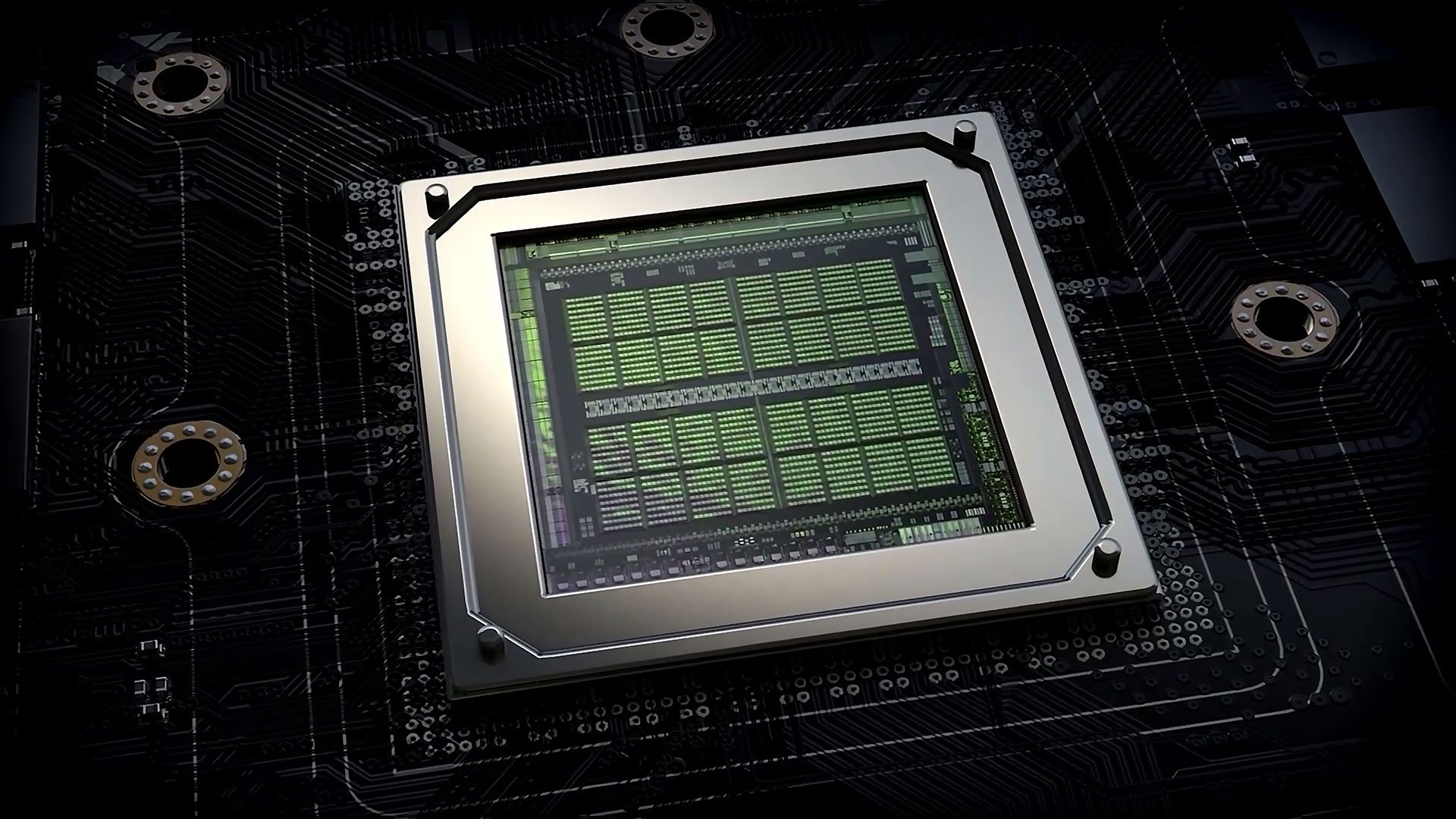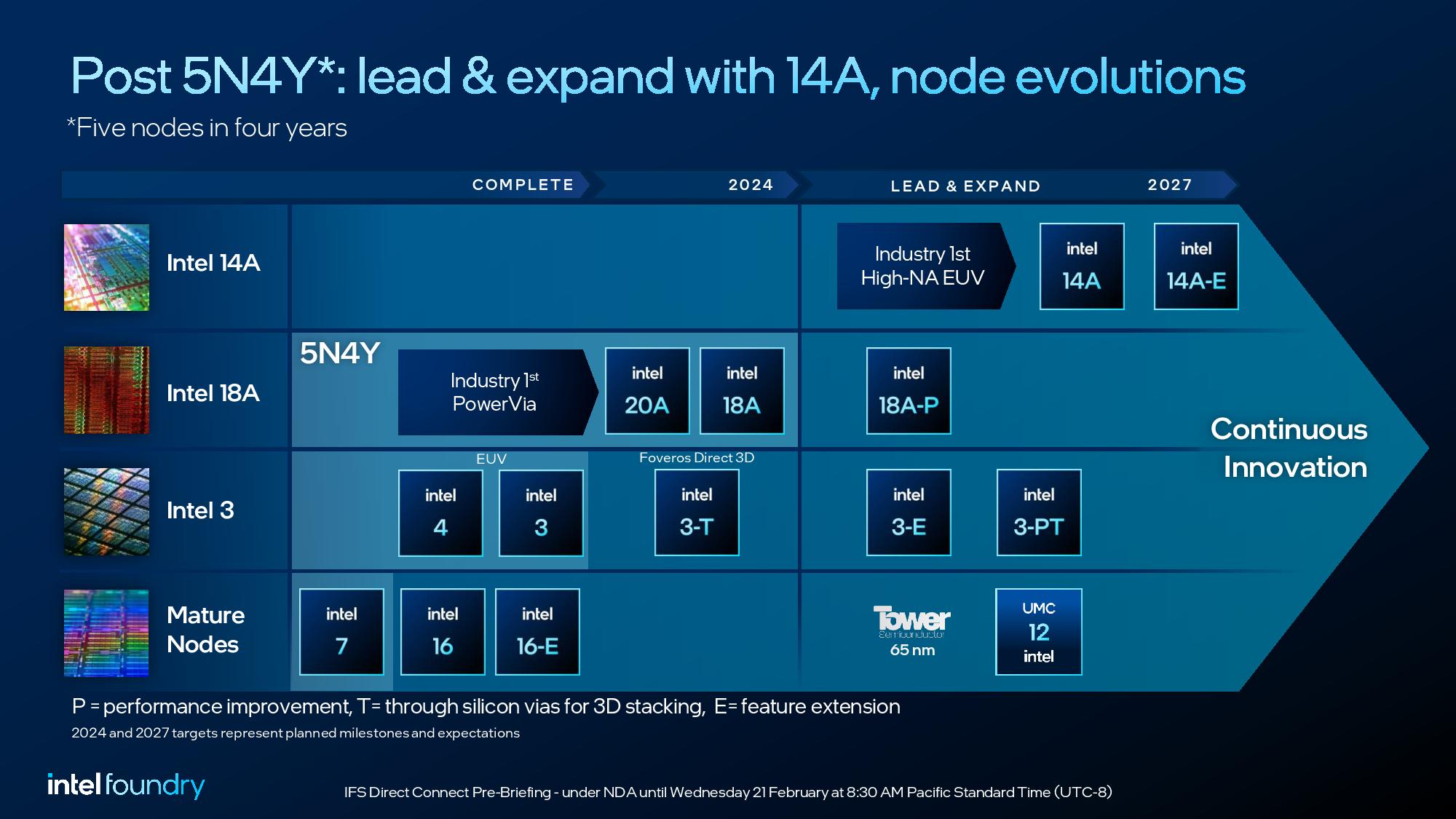Analyst claims Nvidia's gaming GPUs could use Intel Foundry's 18A node in the future
A GeForce GPU made by Intel?

GuruFocus reports that Nvidia is reportedly considering using Intel Foundry's manufacturing services for GPUs aimed at gamers. Timothy Arcuri, an analyst with UBS, is quoted as saying that if Intel lands an order from Nvidia, one of the biggest fabless chip designers, this would be a major win and perhaps an inflection point for Intel Foundry.
According to the analyst, Broadcom and Nvidia—two AI chip powerhouses—are considering using Intel's 18A (1.8 nm-class) process technology for their products. However, Arcuri claims that Nvidia is 'closer' to adopting Intel as its second (or third?) supplier than Broadcom. AMD has also demonstrated interest in this manufacturing process, though its progress with this node is unclear.
"Intel is working to finalize commitments from Nvidia or Broadcom to use its foundry services," Arcuri reportedly wrote in a note to clients.
In addition to 18A, Intel is prepping its performance-enhanced 18A-P fabrication technology, which promises to either increase performance at the same power, or decrease power at the same performance. The analyst believes this production node could appeal more to external customers who want to maximize their performance while minimizing power consumption.

While vanilla 18A manufacturing technology could be a very good choice for Intel, which needs to roll out its next-generation Panther Lake processors for client PCs and Xeon 7 'Clearwater Forest' CPUs for datacenters as soon as possible, fabless chip designers may opt for performance-enhanced version of the process, just like they do with TSMC. By doing so, they get higher performance or lower power and a bit more mature fabrication technology with lower performance variability, lower defect density, and potentially higher yields.
Timothy Arcuri wrote in a note to clients that Intel's new chief executive, Lip-Bu Tan, will emphasize the company's chip design and foundry capabilities in the near term, which is something that both former CEO Pat Gelsinger and interim co-CEOs already did. The comment highlights that for now there is little understanding about Lip-Bu Tan's plans outside of the company.
Lip-Bu Tan will make his first public address as CEO of Intel on March 31 at the company's Vision event in Las Vegas. The event is mostly aimed at analysts and investors.
Stay On the Cutting Edge: Get the Tom's Hardware Newsletter
Get Tom's Hardware's best news and in-depth reviews, straight to your inbox.

Anton Shilov is a contributing writer at Tom’s Hardware. Over the past couple of decades, he has covered everything from CPUs and GPUs to supercomputers and from modern process technologies and latest fab tools to high-tech industry trends.
-
Flemkopf I'm glad to hear there's some interest in Intel's foundry services. I don't think anyone outside of TSMC is happy about the current bleeding-edge manufacturing situation. Samsung's 30% yield on its 2nm is not great, although that article should be taken with a grain of salt, and some quick Google-foo suggests that its more mature 5nm is closer to 88%. GlobalFoundries never made it past about 12nm.Reply
Seriously, just having options outside of a single company is going to be critical for everyone from both a security and a market perspective. I don't think anyone in the global market wants to be relying on SMIC and the Chinese government, and reducing single points of failure in the event of any widespread disruption will be huge. -
logainofhades Having Nvidia as a customer would definitely give Intel some much needed cash right now.Reply -
logainofhades ReplyGururu said:AMD is screwed.
How is AMD screwed exactly? Nvidia moving to Intel just gives TSMC more capacity for AMD chips. The TSMC Arizona fab will be making AMD chips as well. -
Notton This should be a win-win for PC gaming if 18A works out.Reply
Nvidia would no longer have to split 1% of their allocation at TSMC for consumer GPUs and they won't have to trickle it out.
Nvidia tried this in the past with Ampere, but Samsung 8N was... yeah... :rolleyes:
And if 18A works for Geforce GPUs, there's no reason it won't work with Radeon or Ryzen.
(I'm not saying the GPU prices will come down, but at least you might be able to buy one) -
TerryLaze Reply
TSMC is booked out for a couple of years, nvidia making some chips at intel isn't going to change that, it's not moving capacity from tsmc to intel, it's ADDITIONAL.logainofhades said:How is AMD screwed exactly? Nvidia moving to Intel just gives TSMC more capacity for AMD chips. The TSMC Arizona fab will be making AMD chips as well.
Also AMD doesn't have an issue with capacity but with paying for it, they are not exactly swimming in money with only their datacenter segment doing well. -
renz496 Reply
Nvidia capacity will not change. Using intel fab only means that they can devote all their TSMC capacity for AI chip. Also depending on the situation nvidia top gaming gpu probably will still going to be made by TSMC.logainofhades said:How is AMD screwed exactly? Nvidia moving to Intel just gives TSMC more capacity for AMD chips. The TSMC Arizona fab will be making AMD chips as well. -
bit_user Reply
You could just say it improves energy efficiency (i.e. perf/W). The two examples you gave are just points on the perf/W curve typically used to give a rough sense of how the improvement is shaped. However, with no specific numbers given, it makes more sense just to say it's more efficient.The article said:Intel is prepping its performance-enhanced 18A-P fabrication technology, which promises to either increase performance at the same power, or decrease power at the same performance. -
bit_user Reply
They almost had 7 nm, but killed it in 2018, because they were running behind schedule. I'll bet they were kicking themselves for that, back in 2021.Flemkopf said:GlobalFoundries never made it past about 12nm.
More recently, I thought I saw something about them licensing someone else's node, but now I can't find it.